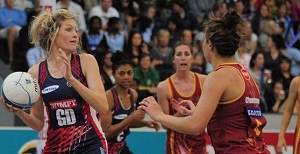Latest News Archive
Please select Category, Year, and then Month to display items
05 June 2018
Photo Supplied
 Archaeological excavations in the Wonderwerk Cave, north of Kuruman in the Northern Cape.
Archaeological excavations in the Wonderwerk Cave, north of Kuruman in the Northern Cape.
Research fellow Dr Lloyd Rossouw from the Department of Plant Sciences at the University of the Free State (UFS) recently published an article in the Nature Ecology and Evolution journal with Dr Michaela Ecker from the University of Toronto as lead author, and Dr James Brink, research fellow at the UFS Centre for Environmental Management. The findings described in “The palaeoecological context of the Oldowan-Acheulean in southern Africa” provides the first extensive paleoenvironmental sequence for the interior of southern Africa by applying a combination of methods for environmental reconstruction at Wonderwerk Cave, which have yielded multiple evidence of early human occupation dating back almost two million years ago.
Where water once was
The Wonderwerk Cave is found north of the Kuruman hills (situated in Northern Cape) a 140m long tube with a low ceiling. The surroundings are harsh. Semi-arid conditions allow for the survival of only hardy bushes, trees, and grasses. But during the Early Pleistocene, stepping out of the Wonderwerk Cave you would have been greeted by a completely different site, the researchers found. Using carbon and oxygen stable isotope analysis on the teeth of herbivores (Dr Ecker), fossil faunal abundance (Dr Brink), as well as the analysis of microscopic plant silica remains (phytoliths) excavated from fossil soils inside the cave (Dr Rossouw), the results show that ancient environments in the central interior of southern Africa were significantly wetter and housed a plant community unlike any other in the modern African savanna.
What difference does it make?
While East African research shows increasing aridity and the spread of summer-rainfall grasslands more than a million years ago, the results from this study indicate an interesting twist. During the same period, shifts in rainfall seasonality allowed for alternating summer and winter-rainfall grass occurrences coupled with prolonged wetlands, that remained major components of Early Pleistocene (more or less the period between one and two million years ago) environments in the central interior of southern Africa. That means our human ancestors were also living and evolving in environments other than the generally accepted open, arid grassland model.
Karla’s name appears on match balls in 2016 again
2015-10-22
 |
She was not destined to reach and win a third Varsity Netball title in 2015, but Karla Mostert still managed to end her last series on a high note.
The University of the Free State (UFS) Netball captain was named Player of the Tournament for the second consecutive year on Monday 19 October 2015.
Therefore, her name will still appear on the balls for the 2016 Varsity Netball series. Mostert, who due to her age will not be eligible to play in the series next year, was also Player of the Tournament last year, with her name appearing on the balls this year. All 31 games during 2015 were played with balls adorned with her name.
This is a consolation prize to Kovsies, as they lost unexpectedly against Pukke by 48-56 in the semi-finals played in the Callie Human Centre on the UFS Bloemfontein Campus on 12 October 2015. Pukke won the series for the first time on Monday 19 October 2015, when they thrashed Maties 50-37 in Stellenbosch.
The 25-year-old Mostert, whose nickname is Chits, has been a great stalwart for Kovsies over the years, and has had many successes with the team. She was also named as the Brutal Fruit Player of the Tournament earlier this year.
The Protea player, who was one of South Africa’s stars during the 2015 World Cup, will be playing netball for Bath in England next year, together with Lenize Potgieter.